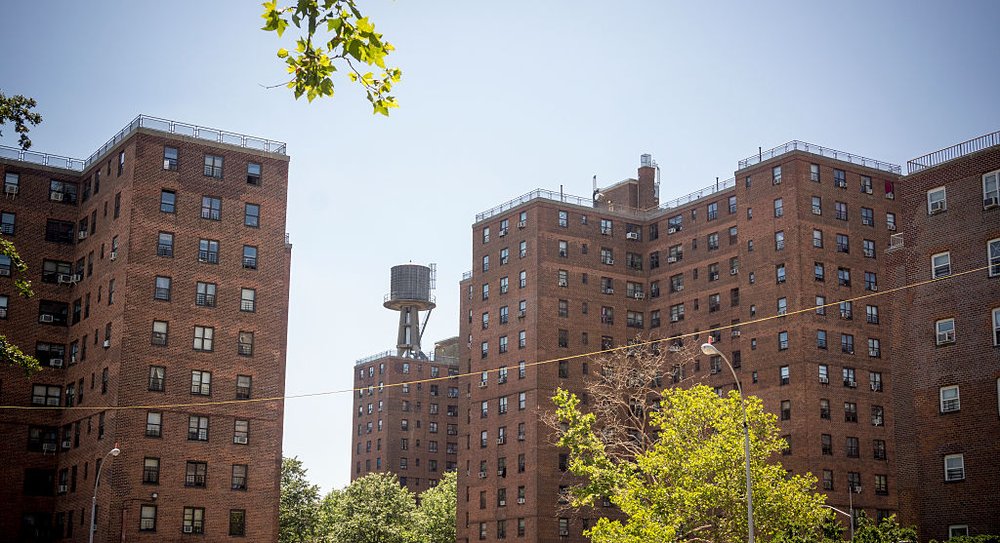It’s taking NYC over a year to fix up vacant public housing units, report shows
Sept. 18, 2023, 2:16 p.m.
The New York City Housing Authority is taking more than a year on average to repair and rent out empty units, according to the annual mayor’s management report

New York City’s public housing agency is taking over a year to repair and rent empty apartments despite a sharp rise in homelessness across the city, according to an annual report card released by the Mayor’s Office Friday.
The average timeline for repairing a vacant New York City Housing Authority unit rose to 370 days last fiscal year, up from around 161 days the prior fiscal year and a nearly five-fold increase from the roughly 77 days it took to make fixes in the 2019 fiscal year, the latest Mayor’s Management Report shows.
The annual performance review of each agency shows a bleak outlook for NYCHA as it contends with aging infrastructure and decades of disinvestment. The agency said it had 8,074 vacant units at the end of the recent fiscal year on June 30. Around 900 units were matched with applicants set to move in, but roughly 4,200 were undergoing repairs and not yet available. The agency is holding nearly 3,000 units off the market, with some used as offices, according to the report.
NYCHA blamed the lag time on more intensive needs “due to the aging conditions in NYCHA buildings.”
The units typically require new cabinets, doors and plumbing fixes, along with lead and asbestos testing, spokesperson Michael Horgan said.
“NYCHA is a critical affordable housing resource, and our goal is to complete apartment turnovers as quickly as possible, while ensuring that New Yorkers are being placed in safe homes that have been remediated of specific hazards,” he said.
Amid the delays, fewer families and individuals are moving into available public housing units compared to recent years. A little more than 1,000 households moved into NYCHA apartments last fiscal year compared to more than 3,300 in the 2020 fiscal year.
NYCHA did manage to help nearly 3,800 of New Yorkers move from homeless shelters to other apartments using Section 8 vouchers issued by the agency — up from just 749 in the 2020 fiscal year. At the same time, the number of people moving from shelters to apartments on public housing campuses plummeted from around 1,900 in the 2020 fiscal year to 650 last year.
The growing vacancies and rising wait times have caught the attention of tenants, advocates and members of the City Council who say NYCHA is crucial for helping relieve New York City’s housing shortage and homelessness crisis.
“These numbers have real impacts on current NYCHA tenants waiting for transfers or living in buildings with vacant apartments as well as the more than 250,000 New Yorkers on the NYCHA waiting list,” said Public Housing Committee Chair Alexa Aviles at a hearing earlier this year. “It is this kind of housing that will keep New Yorkers rooted in the city that they built and the city that they love.”
She said the vacancies also deprive NYCHA of much-needed revenue, a particular problem as rent collection plummeted during the COVID pandemic and tenants owed a combined $454 million at the end of 2022.
Aixa Torres, a longtime resident association president at the Smith Houses in Manhattan, said the agency does a poor job communicating with tenants awaiting transfer, or families moving into public housing for the first time, about when the apartments will be available. She said one family with three young children was waiting for more than a year and a half to move into an apartment they were approved for.
“They have to constantly call,” Torres said. “The response, getting through is very hard.”
She said her complex had 54 vacant units that needed to undergo lead and mold remediation at the time of the hearing.
Queensbridge Houses Resident Association President Corinne Haynes said the needs for each empty unit vary, especially when someone has been living in the same place for decades.
“There’s no cookie cutter answer. Every apartment has its own issues and circumstances,” she said. “But all of it requires funding.”
NYCHA estimates that it needs $78.3 billion to cover necessary repairs and upgrades, up from about $40 billion five years ago, amid rising construction costs and deteriorating conditions. The agency said the costs amount to about $485,000 per apartment.
NYCHA Chief Operating Officer Eva Trimble told the Council that public housing residents spend an average of 25 years in their apartments, leading to mounting repairs and renovation needs that comply with updated safety standards when they finally become vacant.
“This is a key opportunity to complete critical health and safety work in these apartments,” she said.
Despite funding woes and mounting needs, NYCHA managed to make progress on other areas considered “critical indicators” of agency performance, the mayor’s management report shows.
The agency fixed broken elevators and heat outages at a faster pace, improvements previously highlighted by a federal monitor overseeing NYCHA.